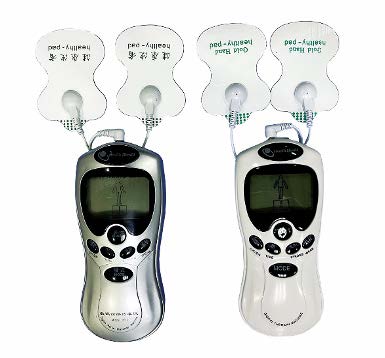The Analgesic Effect of Transcutaneous Electrical Nerve Stimulation (TENS) on the Opposite Side for Phantom Limb Pain
DOI:
https://doi.org/10.33192/Smj.2022.30Keywords:
Transcutaneous electrical nerve stimulation, amputee, phantom limb pain, contralateral, neuromodulation, neuropathic painAbstract
Objective: To observe the effects of TENS on the contralateral limb and PLP reduction.
Materials and Methods: This was a single center retrospective study of 20 amputee participants with phantom limb pain. The inclusion criteria were participants aged above 18, average pain of at least 4/10 on the numerical rating scale (NRS), duration of pain longer than one week and treatment with TENS on the opposite side. We recorded pain intensity before and after TENS application, response time to treatment, satisfaction, and adverse effects.
Results: Of the 20 amputee participants, all patients suffered from PLP and three also suffered from residual limb pain. The average pain score before use of TENS was 4.85/10 and after was 1.15/10. The mean pain intensity score was reduced by 3.7/10 (95% CI 2.95-4.45/10) or 76.28% (95% confidence interval 63.61-89.47%). The average overall satisfaction was 81.65%, and no adverse effects from application of TENS was reported.
Conclusion: The study shows that the application of TENS on the opposite side is a safe and effective treatment method for intractable pain from PLP.
References
Ephraim PL, Wegener ST, MacKenzie EJ, Dillingham TR, Pezzin LE. Phantom pain, residual limb pain, and back pain in amputees: results of a national survey. Arch Phys Med Rehabil. 2005;86(10):1910-9.
Kern U, Busch V, Rockland M, Kohl M, Birklein F. Prevalence and risk factors of phantom limb pain and phantom limb sensations in Germany. A nationwide field survey. Schmerz. 2009;23(5):479-88.
Kooijman CM, Dijkstra PU, Geertzen JH, Elzinga A, van der Schans CP. Phantom pain and phantom sensations in upper limb amputees: an epidemiological study. Pain. 2000;87(1):33-41.
Richardson C, Glenn S, Nurmikko T, Horgan M. Incidence of phantom phenomena including phantom limb pain 6 months after major lower limb amputation in patients with peripheral vascular disease. Clin J Pain. 2006;22(4):353-8.
Kaur A, Guan Y. Phantom limb pain: A literature review. Chin J Traumatol. 2018;21(6):366-8.
Edwards DS, Mayhew ER, Rice AS. “Doomed to go in company with miserable pain”: surgical recognition and treatment of amputation-related pain on the Western Front during World War 1. Lancet. 2014;384(9955):1715-9.
Alviar MJ, Hale T, Dungca M. Pharmacologic interventions for treating phantom limb pain. Cochrane Database Syst Rev. 2016;10:CD006380.
Ramachandran VS, Altschuler EL. The use of visual feedback, in particular mirror visual feedback, in restoring brain function. Brain. 2009;132(Pt 7):1693-710.
Ramachandran VS, Rogers-Ramachandran D, Stewart M. Perceptual correlates of massive cortical reorganization. Science. 1992;258(5085):1159-60.
Mulvey MR, Radford HE, Fawkner HJ, Hirst L, Neumann V, Johnson MI. Transcutaneous electrical nerve stimulation for phantom pain and stump pain in adult amputees. Pain Pract. 2013;13(4):289-96.
Kawamura H IK, Yamamoto M, Yamamoto H, Ishida K, Kawakami T, Tani T, et al. The transcutaneous electrical nerve stimulation applied to contralateral limbs for the phantom limb pain. J Phys Ther Sci. 1997;9:71-76.
Katz J, France C, Melzack R. An association between phantom limb sensations and stump skin conductance during transcutaneous electrical nerve stimulation (TENS) applied to the contralateral leg: a case study. Pain. 1989;36(3):367-77.
Carabelli RA, Kellerman WC. Phantom limb pain: Relief by application of TENS to contralateral extremity. Arch Phy Med Rehabil. 1985;66:466-7.
Fitzgerald M. The contralateral input to the dorsal horn of the spinal cord in the decerebrate spinal rat. Brain Res. 1982;236(2):275-87.
Chaudakshetrin P. Validation of the Thai Version of Brief Pain Inventory (BPI-T) in cancer patients. J Med Assoc Thai. 2009; 92(1):34-40.
Subedi B, Grossberg GT. Phantom limb pain: mechanisms and treatment approaches. Pain Res Treat. 2011;2011:864605.
Johnson MI, Mulvey MR, Bagnall AM. Transcutaneous electrical nerve stimulation (TENS) for phantom pain and stump pain following amputation in adults. Cochrane Database Syst Rev. 2015;8(8):CD007264.
Bennett MI, Hughes N, Johnson MI. Methodological quality in randomised controlled trials of transcutaneous electric nerve stimulation for pain: low fidelity may explain negative findings. Pain. 2011;152(6):1226-32.
Avdić D, Buljina A. TENS u tretmanu misićnog spazma [TENS in the treatment of muscle spasm]. Med Arh. 2000;54(1):49-51.
Bowornkitiwong T, Seevokom W, Tawatchot P, Paisan T, Sirichotpapa S, Nanthanangkul S, et al. Short-term Effect of Transcutaneous Electrical Nerve Stimulation (TENS) on Pain in Patients with Bone Metastasis: An Uncontrolled Pretest-Posttest Study. Siriraj Med J 2020;72(6):470-5. [Internet]. 2020 Sep. 1 [cited 2022 Feb. 20]; Available from: https://he02.tcithaijo. org/index.php/sirirajmedj/article/view/243595

Published
How to Cite
Issue
Section
License

This work is licensed under a Creative Commons Attribution-NonCommercial-NoDerivatives 4.0 International License.
Authors who publish with this journal agree to the following conditions:
Copyright Transfer
In submitting a manuscript, the authors acknowledge that the work will become the copyrighted property of Siriraj Medical Journal upon publication.
License
Articles are licensed under a Creative Commons Attribution-NonCommercial-NoDerivatives 4.0 International License (CC BY-NC-ND 4.0). This license allows for the sharing of the work for non-commercial purposes with proper attribution to the authors and the journal. However, it does not permit modifications or the creation of derivative works.
Sharing and Access
Authors are encouraged to share their article on their personal or institutional websites and through other non-commercial platforms. Doing so can increase readership and citations.













